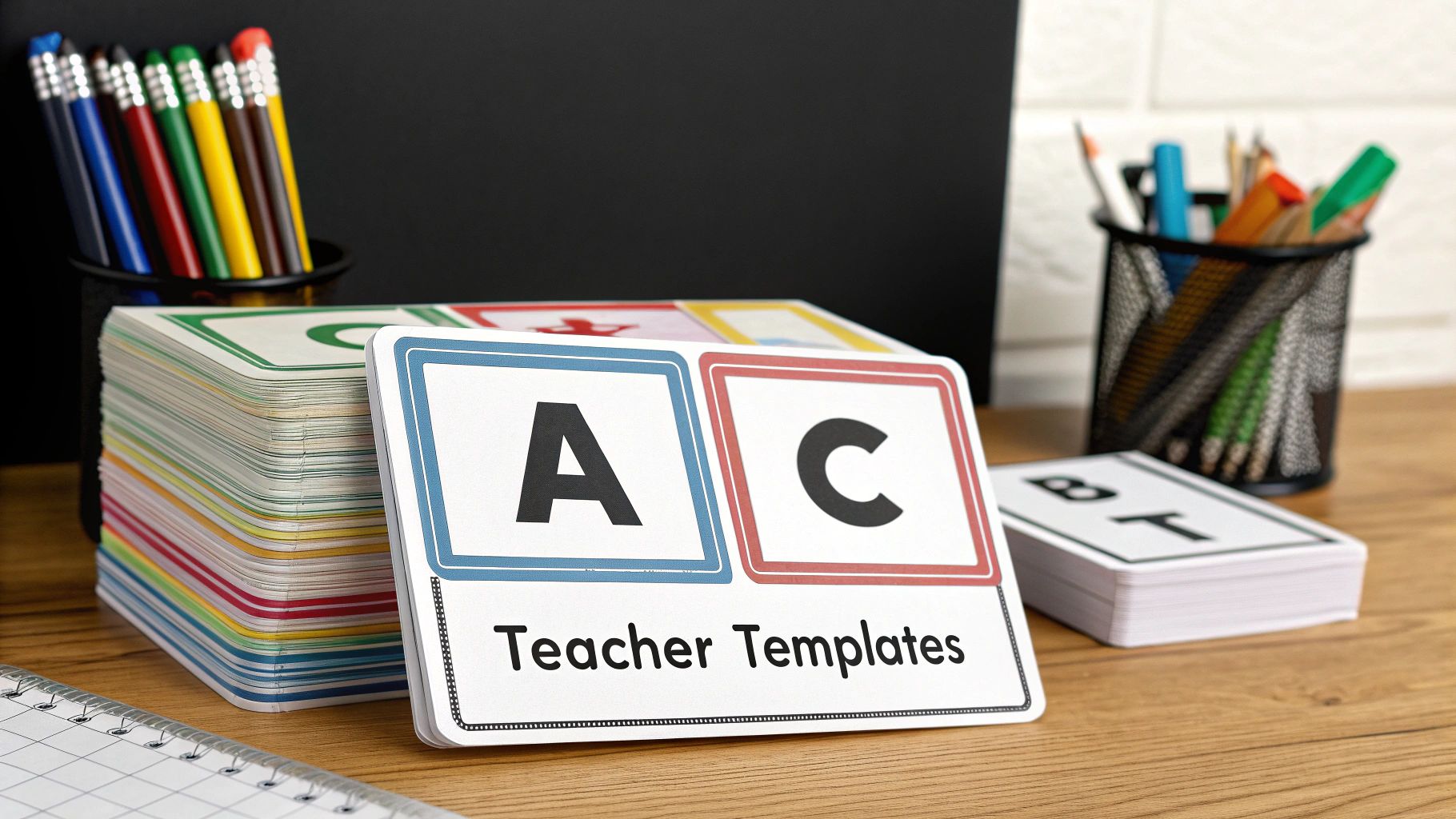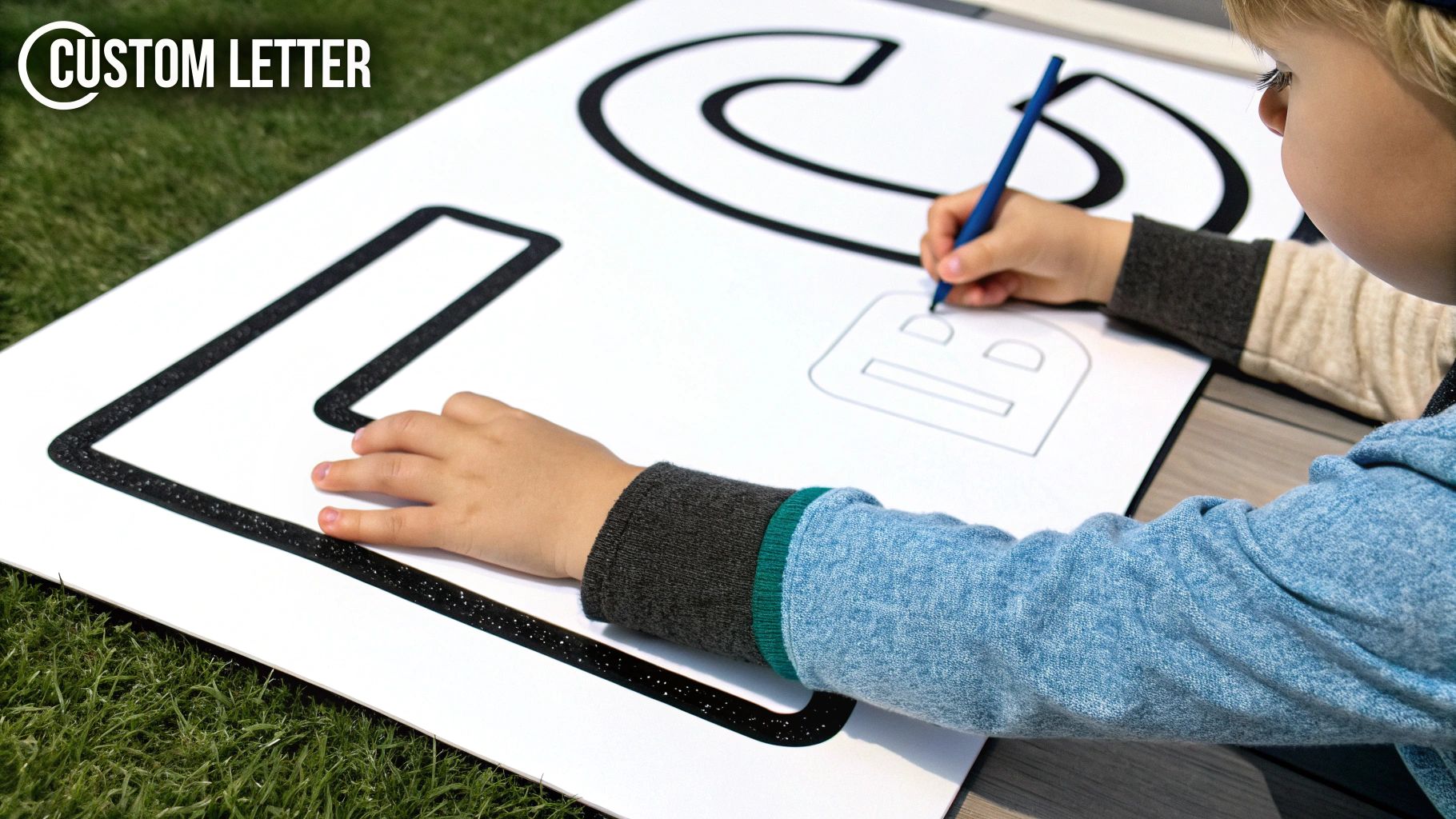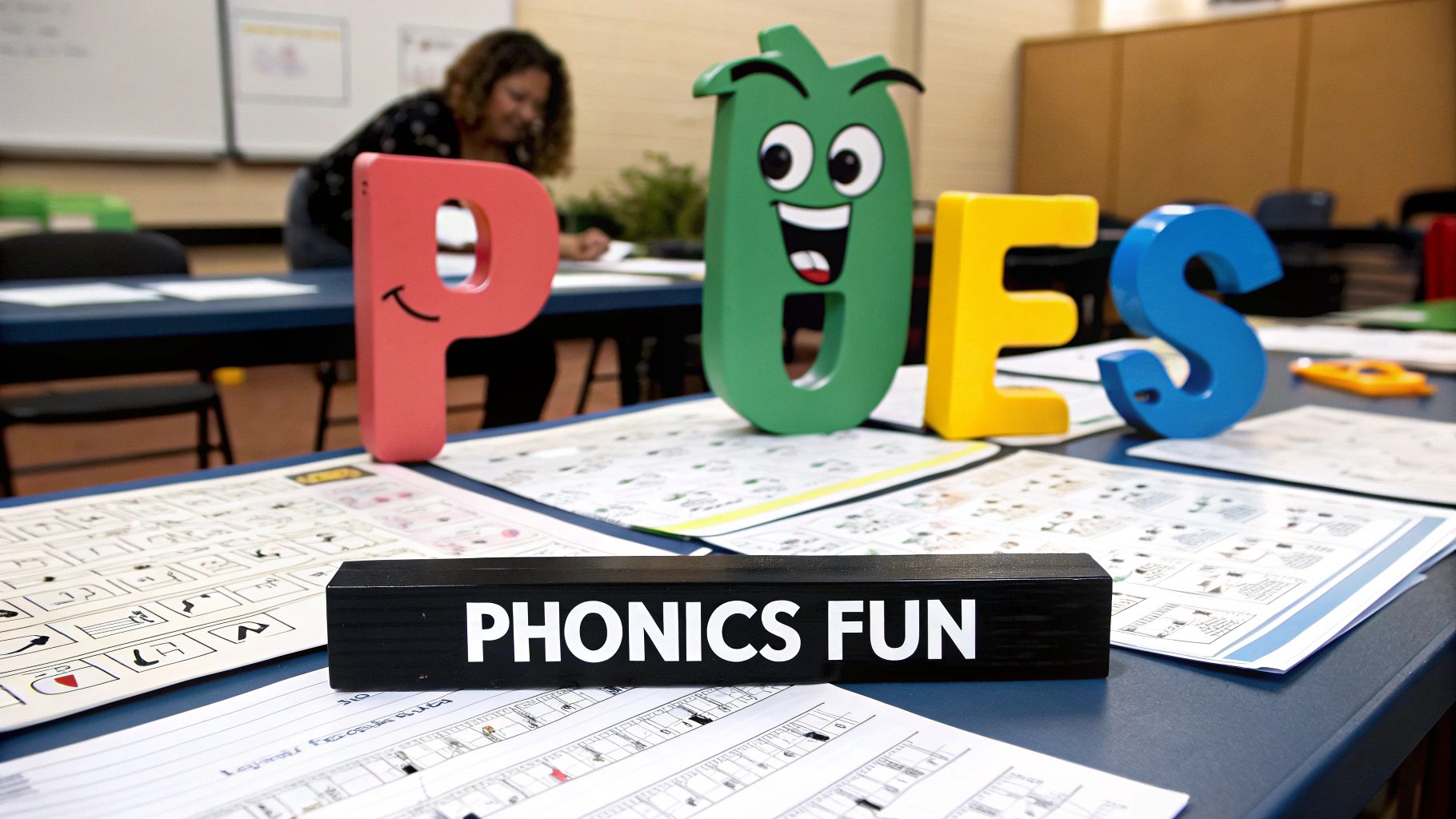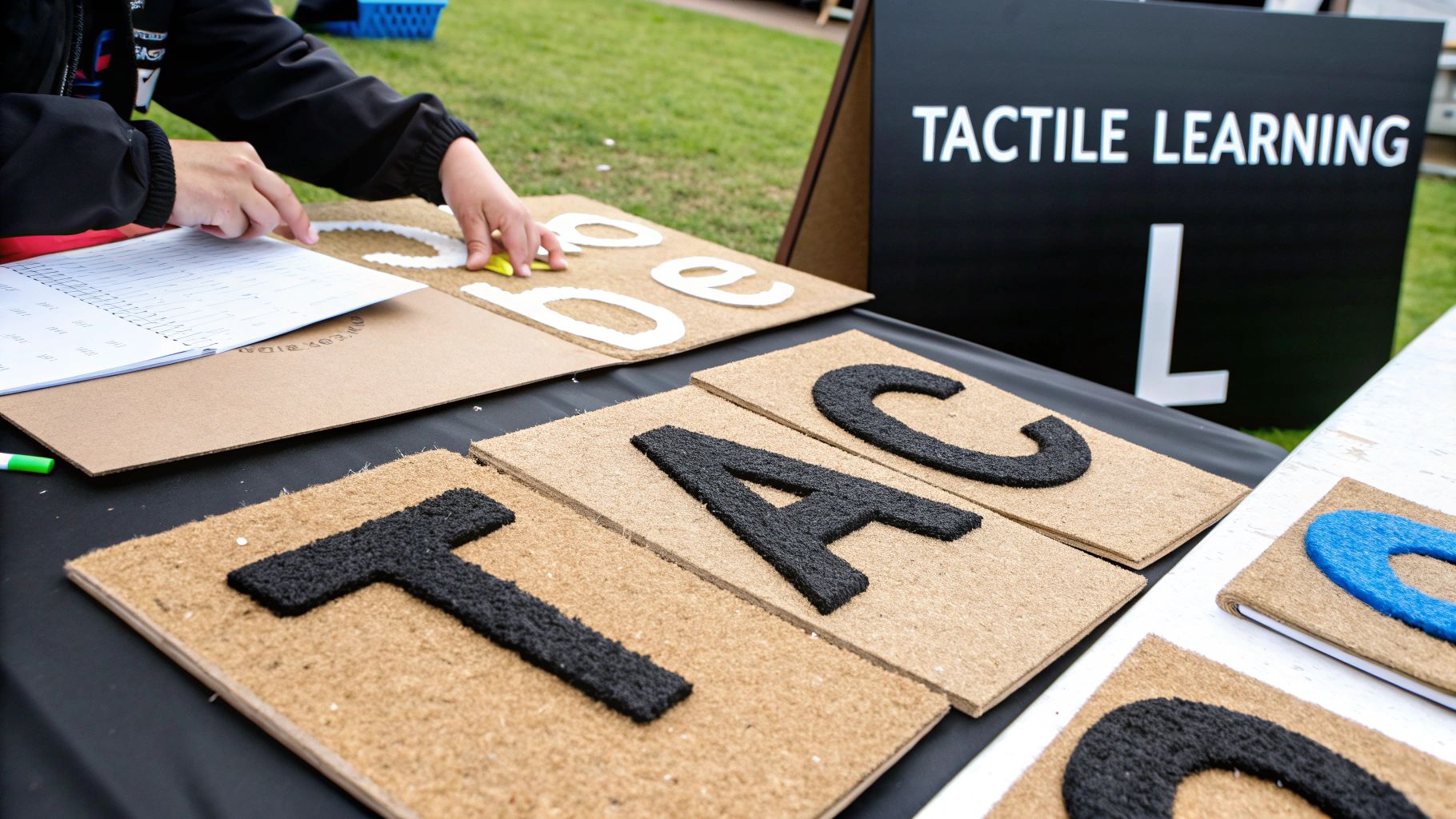Unlocking Early Literacy: Your Ultimate Guide to Printable Alphabet Letters
Printable alphabet letters are a cornerstone resource for educators, parents, and therapists aiming to build foundational literacy skills. From simple block letters for basic recognition to thematic designs for engaging classroom displays, these versatile tools support a wide range of learning objectives. Whether you need materials for phonics lessons, fine motor practice, or creating a print-rich environment, having a reliable source of high-quality alphabet letters printable saves valuable time and enhances educational activities. The right set of letters can transform a simple tracing exercise into an interactive art project or turn a blank wall into an immersive learning space.
This comprehensive guide moves beyond simple links to provide a detailed analysis of the best free and premium printable alphabet resources available. We'll explore a curated list of platforms, examining the specific strengths and practical limitations of each collection. Instead of just listing features, we offer real-world use cases, implementation advice, and honest assessments to help you choose the perfect letters for your specific needs. You will discover resources ideal for:
- Tactile Learning: Creating sandpaper letters or playdough mats.
- Classroom Decor: Designing bulletin boards and word walls.
- Customized Worksheets: Adapting letter sizes and styles for individual students.
- Thematic Units: Finding letters that match seasonal or subject-based lessons.
Our goal is to equip you with the insights necessary to select and effectively use alphabet letters printable to support early learning and foster a love of reading.
1. Teachers Pay Teachers Alphabet Letter Templates
For educators and parents seeking professionally designed and classroom-tested resources, Teachers Pay Teachers (TpT) is an unparalleled marketplace. It hosts thousands of alphabet letters printable sets created by experienced teachers. These are not just basic outlines; many are comprehensive educational packets that integrate phonics, handwriting practice, and thematic learning directly into the letter designs. The platform operates as a massive digital library where educators share and sell their original materials, ensuring a high standard of quality and pedagogical relevance.

The primary advantage of sourcing from TpT is the sheer diversity and depth of the content available. You can find everything from simple, bold, black-and-white letters perfect for bulletin boards to intricate, illustrated alphabets designed for specific themes like "Jungle Animals" or "Outer Space." Many listings are more than just letters; they are complete learning units that include corresponding worksheets, craft instructions, and even lesson plans. This makes TpT a one-stop shop for building a cohesive and engaging curriculum.
Use Cases and Implementation
- Classroom Decor: Print large, themed alphabet sets to create an immersive and educational classroom environment. A first-grade teacher might use a nature-themed alphabet line displayed above the whiteboard for daily reference.
- Literacy Centers: Smaller, laminated alphabet cards from a purchased set can be used in hands-on activities. For example, students can match uppercase and lowercase letters, practice alphabetical order, or use them as prompts for beginning sound games.
- Homeschool Curriculum: Parents can purchase bundled alphabet resources that provide a structured, week-by-week approach to learning letters, complete with activities and progress-tracking sheets.
Practical Considerations
While TpT offers immense value, it’s important to approach it strategically. The platform features both free and paid resources, with paid items often offering more comprehensive content. Before committing to a purchase, always read the reviews from other educators and carefully examine the preview files to ensure the quality and style match your needs. Many sellers offer bundles that package multiple related resources at a discounted price, which can be a cost-effective way to acquire a full set of alphabet materials. Following your favorite creators is also a great way to stay updated on new releases and sales.
2. Education.com Printable Alphabet Letters
For parents and educators looking for a structured, curriculum-aligned approach, Education.com offers a wealth of resources developed by educational experts. The platform provides a comprehensive library of alphabet letters printable that are meticulously designed to integrate into a broader literacy development program. Unlike standalone templates, these materials are often part of a systematic learning path that combines letter recognition with phonics, handwriting, and early reading skills, making it a powerful tool for foundational learning. The resources are trusted by numerous school districts and Head Start programs for their pedagogical soundness.

The key strength of Education.com is its guided learning framework. The platform doesn't just provide printables; it organizes them into a coherent sequence. Users can access individual worksheets, coloring pages, and letter-tracing activities, or follow a curated curriculum that introduces letters and sounds in a logical order. This expert-guided approach removes the guesswork for parents and provides teachers with reliable, high-quality supplemental materials that align with established educational standards. The content is designed to be both engaging for children and effective as a teaching aid.
Use Cases and Implementation
- Supplemental Homeschooling: A parent can use the platform’s guided lessons to supplement their core curriculum, printing out specific worksheets that address a child's weak points, such as differentiating between 'b' and 'd'.
- Targeted Intervention: Reading specialists and speech therapists often use these printables for targeted practice. For instance, a therapist might use the "Letter of the Day" worksheets to focus on a specific sound a child is struggling to pronounce or recognize.
- Independent Learning Stations: In a kindergarten classroom, a teacher can set up a station with a variety of Education.com’s alphabet printables, from letter mazes to "color by letter" pages, allowing for differentiated, self-paced learning.
Practical Considerations
Education.com operates on a freemium model. While many excellent resources are available for free, a premium membership unlocks unlimited access to the full library, including guided lessons and progress tracking features. It's wise to start with the free resources to assess if the style and approach fit your child's or students' learning needs. For a more comprehensive strategy, combine the alphabet printables with their corresponding online games and phonics activities to create a multi-modal learning experience that reinforces concepts across different formats. Using the platform’s progress tracker can also provide valuable insights into a child's development.
3. Twisty Noodle Customizable Letter Templates
Twisty Noodle offers a uniquely interactive approach to generating alphabet letters printable by putting customization at the forefront. Unlike static, pre-designed templates, this platform functions as a powerful tool that allows educators and parents to create bespoke worksheets tailored to specific learning needs. Users can select a letter, choose a font style (including block, script, and D'Nealian), adjust the text size, and most importantly, select the type of tracing line, from solid outlines to various dashed and dotted options for handwriting practice. This level of control makes it an indispensable resource for differentiated instruction.

The core strength of Twisty Noodle lies in its adaptability. It moves beyond a one-size-fits-all model, empowering users to create materials that precisely match a child's developmental stage. For a preschooler just learning letter shapes, you can generate a large, simple bubble letter. For a first-grader refining their fine motor skills, you can create a worksheet with their name in a dotted, traceable font. This personalization is particularly effective and is why the tool is highly regarded by occupational therapists and special education professionals who require finely tuned resources.
Use Cases and Implementation
- Personalized Name Practice: The most popular use is creating custom name tracing sheets. Simply type the child's name, select a dotted font, and print a personalized practice page in seconds.
- Occupational Therapy Activities: Therapists use the various tracing options to create progressive exercises. A child might start with thick, widely-spaced dots and gradually move to finer, more complex tracing lines to build motor control.
- Special Education Support: For students with dysgraphia or other learning differences, teachers can create worksheets using specific, recommended fonts (like D'Nealian or Zaner-Bloser) and adjust letter sizing and spacing to improve legibility and reduce visual clutter.
Practical Considerations
While Twisty Noodle is incredibly versatile, its interface can feel a bit dated and may require some exploration to uncover all its features. To maximize its potential, experiment with the different font and line style combinations before printing. For younger learners, always start with larger font sizes and simpler tracing lines to build confidence. Once you find a setting that works well for a particular child or activity, consider bookmarking the URL or saving your settings, as the site does not have user accounts to save preferences. Many of the resources are free, but the site is supported by ads, which can be distracting.
4. Starfall Alphabet Resources
For those prioritizing a phonics-based, systematic approach to literacy, Starfall offers a treasure trove of educational materials, including their well-regarded alphabet letters printable. Backed by the Starfall Education Foundation, a nonprofit organization, these resources are designed to seamlessly integrate with their popular online curriculum. The printables are not just letters; they are learning tools that directly reinforce the connection between a letter's shape, its name, and the sound it makes, often featuring the beloved characters from the Starfall universe.

The core strength of Starfall's printables lies in their pedagogical foundation. Each letter sheet, poster, or card is part of a larger, research-based system proven effective in thousands of pre-K and kindergarten classrooms, as well as in ESL and reading intervention programs. Rather than being standalone decorations, these materials are crafted to support a multi-sensory learning experience. The visual representation of the letter 'A' as an alligator, for example, helps anchor the letter-sound relationship in a child's memory, making the learning process both engaging and effective.
Use Cases and Implementation
- Integrated Learning Stations: Combine Starfall's online games with their printable worksheets. A student can complete an interactive letter activity on a tablet and then move to a table to practice tracing the same letter on a corresponding printable sheet.
- Systematic Instruction: Use the printable alphabet sequence as a guide for weekly lesson plans. Introduce one letter and its sound each week using the provided flashcards, practice pages, and mini-books to build a strong foundation.
- Memory Reinforcement: Print and display the character-based alphabet posters. Using the character names (e.g., "Zac the Rat" for 'Z') provides a memorable mnemonic device that helps students recall letter sounds more easily.
Practical Considerations
Starfall provides a mix of free and member-only resources. While many foundational alphabet letters printable are available for free, a full membership unlocks a more comprehensive library of materials, including advanced phonics activities and readers. To maximize their effectiveness, follow the recommended sequence of introduction, as it is designed for progressive skill-building. Combining the printables with the free online interactive activities on the Starfall website creates a powerful, blended learning environment that reinforces concepts across different modalities.
5. Super Simple Learning Alphabet Printables
For educators and parents aiming to create a multisensory learning experience, Super Simple Learning offers resources that seamlessly blend visual aids with auditory reinforcement. Known for their wildly popular educational songs on YouTube, their alphabet letters printable sets are designed to coordinate directly with their musical content. This creates a powerful, cohesive system where children see, hear, and interact with the letters simultaneously, a method particularly effective for auditory and kinesthetic learners. The designs are bright, friendly, and instantly recognizable to children familiar with the Super Simple brand.
The core advantage of using Super Simple's printables is their integration with a proven, engaging learning platform. Instead of being standalone visuals, these letters serve as physical anchors to the songs and videos that millions of children already love. The collection includes a variety of formats, from alphabet flashcards and wall posters to letter-themed coloring pages and crafts. This allows for a layered approach to teaching the alphabet, where a child might watch the "Phonics Song," then color a printable 'A' for apple, and later use the flashcards for a matching game.
Use Cases and Implementation
- Integrated Music and Movement: Print the alphabet letters and use them as props during song time. When the "ABC Song" is playing, have children hold up the corresponding letter as it's sung, adding a physical component to the lesson.
- Thematic Learning Stations: Create a learning station themed around a specific letter. For example, for the letter 'B', you could play the "Bumblebee" song, provide bee-themed coloring sheets from Super Simple, and have the large printable 'B' on display.
- ESL and Special Education: The combination of simple visuals, clear audio, and repetition in Super Simple’s content makes these printables ideal for English as a Second Language (ESL) students and children with special educational needs who benefit from multisensory input.
Practical Considerations
Most of Super Simple’s printable resources are available for free on their website, making them an incredibly accessible option. To maximize their effectiveness, it is crucial to pair the printables with their corresponding songs and videos. The visual aids are designed to reinforce the auditory content, and using them in isolation diminishes their impact. When printing, use high-quality, bright white paper to ensure the vibrant colors pop and capture children's attention. Laminating the flashcards or posters is recommended for durability, especially in a classroom or daycare setting where they will be handled frequently.
6. Montessori-Style Sandpaper Letter Templates
For educators and parents dedicated to a multi-sensory approach to literacy, printable Montessori-style sandpaper letter templates offer a pathway to one of the most effective tactile learning tools. Developed by Maria Montessori, these letters are designed to teach phonetic sounds and proper letter formation through touch. By providing templates for these alphabet letters printable, you can create a high-quality, hands-on resource at a fraction of the cost of manufactured sets, making this iconic method accessible to more classrooms and homes.
The core principle behind sandpaper letters is creating a muscle memory for writing. As a child traces the gritty texture of a letter with their fingers, they are internalizing its shape and the strokes required to form it. These printable templates guide you in cutting out the letter shapes from sandpaper and mounting them onto cards (traditionally blue for vowels and pink for consonants). This DIY approach allows for customization in size and texture, providing a powerful learning experience that connects the physical, auditory, and visual senses.
Use Cases and Implementation
- Early Literacy Introduction: Use these letters as a child's first formal introduction to the alphabet. The Montessori method suggests starting with lowercase letters, as they are most common in written text.
- Occupational Therapy and Special Education: Therapists often use sandpaper letters to help children with fine motor skill deficits or dysgraphia. The tactile feedback helps reinforce letter formation in a low-pressure, non-writing context.
- Homeschooling Curriculum: Parents can easily integrate these handmade letters into a Montessori-at-home setup. Pair them with a sand tray for pre-writing practice, where the child traces the sandpaper letter and then replicates the shape in the sand.
Practical Considerations
Creating your own set is a project, so be prepared for a multi-step process involving printing, tracing, cutting sandpaper, and gluing. For the best results, print the templates on heavy cardstock for durability. Use different grits of sandpaper to provide varying levels of sensory input, with finer grits often being more comfortable for young children. When introducing the letters, model the correct tracing method: using the index and middle fingers of the dominant hand to trace the letter while saying its phonetic sound, not its name. This direct association between shape, feel, and sound is the key to the method's success.
7. Pinterest Curated Alphabet Letter Collections
Pinterest stands as a visual discovery engine and a community-driven hub, making it an invaluable resource for finding diverse alphabet letters printable. Instead of being a single source, it functions as a massive, curated collection of ideas and links from countless teacher bloggers, designers, and educational websites. Users "pin" images of alphabet printables they like, creating a crowd-sourced library where the best and most visually appealing resources naturally rise to the top through saves and shares. The platform is especially powerful for discovering niche themes and creative applications.
The primary strength of using Pinterest is its role as an aggregator of creativity. You can search for highly specific themes like "dinosaur font alphabet letters printable" or "watercolor floral ABCs" and find dozens of options in seconds. This visual-first approach allows you to quickly assess the style and quality of a printable before even clicking through to the source. Many pins link directly to blog posts or websites where you can download the files, often for free, making it a budget-friendly starting point for any project.
Use Cases and Implementation
- Themed Classroom Displays: Search for alphabets that match a specific classroom theme or season. A kindergarten teacher could find a pumpkin-themed alphabet for fall or a snowflake set for winter to create timely and engaging wall decor.
- DIY Craft Inspiration: Beyond simple printouts, Pinterest is full of ideas for using alphabet letters in crafts. For example, find a pin that shows how to use printable letters as stencils for painting on a library bag or as templates for creating felt letter magnets.
- Lesson Plan Aggregation: Create a dedicated board for "Alphabet Activities" and pin not just the letters themselves, but also corresponding games, worksheets, and sensory bin ideas linked from various educational blogs.
Practical Considerations
While Pinterest is a treasure trove, it requires a mindful approach. Not all pins lead to high-quality or functioning links; always verify that the link is still active and leads to a reputable source before planning a lesson around it. Use the number of saves or repins as a general indicator of quality and popularity. To stay organized, create specific boards such as "Printable Alphabet Banners" or "Lowercase Letter Crafts." This helps you categorize your finds and easily locate them later. Finally, be aware that many pins link to blogs that require an email signup to access the free download.
7-Source Alphabet Letter Printables Comparison
| Product | Core Features/Characteristics | User Experience/Quality ★ | Value Proposition ? | Target Audience ? | Unique Selling Points ✨ |
|---|---|---|---|---|---|
| Teachers Pay Teachers Alphabet Letter Templates | Vast styles, multi-format, activity bundles | ★★★★ Professional designs, diverse quality | Paid resources, bundles save money | Educators, homeschoolers, classrooms | Created by educators, lesson plan bundles ? |
| Education.com Printable Alphabet Letters | Research-based, phonics integrated, progress tracking | ★★★★ Free tier, systematic learning approach | Mix of free & subscription | Schools, speech therapists, literacy coaches | Curriculum integration, progress tracking |
| Twisty Noodle Customizable Letter Templates | Real-time customization, tracing options, instant PDFs | ★★★★ Highly customizable, free | Free with extensive options | Special ed, OT, homeschoolers | Personalized name integration, fast output ✨ |
| Starfall Alphabet Resources | Phonics sequence, mascots, linked digital content | ★★★★ Engaging, structured, subscription required | Subscription needed | Kindergarten, ESL, reading intervention | Character-based design, digital platform ? |
| Super Simple Learning Alphabet Printables | Song coordination, bright designs, multi-format | ★★★★ High engagement, free basic access | Mostly free | Preschoolers, auditory & kinesthetic learners | Music synced, multi-sensory approach ✨ |
| Montessori-Style Sandpaper Letter Templates | Tactile focus, proper formation, DIY instructions | ★★★★ Proven Montessori method, DIY effort needed | Cost-effective DIY | Montessori schools, homeschoolers, therapists | Authentic Montessori method, tactile input ? |
| Pinterest Curated Alphabet Letter Collections | Huge style variety, community rated, visual browsing | ★★★ Variable quality, free | Free access | Teachers, parents, DIY educators | Massive community content, seasonal themes ✨ |
Choosing the Right Letters for Your Little Learners
Navigating the vast world of alphabet letters printable can feel overwhelming, but as we've explored, the right resource is simply the one that best fits your specific educational goals and your child's learning style. The journey from recognizing abstract shapes to confidently forming words is a monumental one, and these printable tools are foundational supports for that process. We've examined a range of options, from the comprehensive, educator-vetted marketplaces like Teachers Pay Teachers to the highly specific, tactile experience offered by Montessori-style sandpaper letter templates.
The key takeaway is that there is no single "best" set of printable letters. The ideal choice depends entirely on the context of its use. Are you focused on pure letter recognition? A simple, bold, black-and-white set from a resource like Education.com might be the most effective, distraction-free tool. Are you trying to integrate letter learning with thematic units or seasonal activities? The creative, curated collections on Pinterest or the engaging resources from Super Simple Learning will provide that crucial element of fun and relevance. For learners who need a more hands-on, kinesthetic approach, the tactile nature of sandpaper letters or the customizable tracing sheets from Twisty Noodle can make all the difference.
Making a Strategic Choice
To move forward effectively, consider these actionable steps:
- Assess Your Primary Goal: Before you hit "print," define what you want to achieve in a given session. Is it letter formation? Phonic sounds? Fine motor skill development? Your objective will immediately narrow down the best type of alphabet letters printable to use. For instance, a bubble letter template is great for coloring and fine motor skills but less ideal for teaching precise letter formation.
- Evaluate Your Learner's Needs: Observe your child or students. Do they respond well to vibrant colors and characters, or do they get easily distracted? Are they ready for lowercase letters, or should you focus exclusively on uppercase for now? Tailoring the resource to the learner, not the other way around, is the cornerstone of effective teaching.
- Integrate, Don't Isolate: The most powerful learning happens when letters are not just abstract symbols on a page. Use your chosen printables to build words, create banners for a study corner, or go on a letter hunt around the house. Connect the printed letter 'A' to an actual apple. This contextual learning solidifies understanding far more than rote memorization.
The Lasting Impact of Foundational Literacy
Ultimately, the humble alphabet letters printable is more than just a piece of paper with a character on it. It is a key that unlocks the door to literacy. By thoughtfully selecting and creatively implementing these resources, you are not just teaching the alphabet; you are building a foundation of confidence, curiosity, and a lifelong love of reading. The effort you invest now in finding the right tools and making learning an engaging, positive experience will pay dividends for years to come, shaping a child's entire academic journey.
As you organize lesson plans and gather your printable resources, keeping track of ideas, student progress, and curriculum notes is essential. TNote is an AI-powered tool designed to help educators and parents capture, organize, and retrieve information effortlessly. Use it to jot down which printable letters worked best for a specific concept or to plan your next literacy activity with AI-driven insights. Discover how TNote can streamline your educational planning.